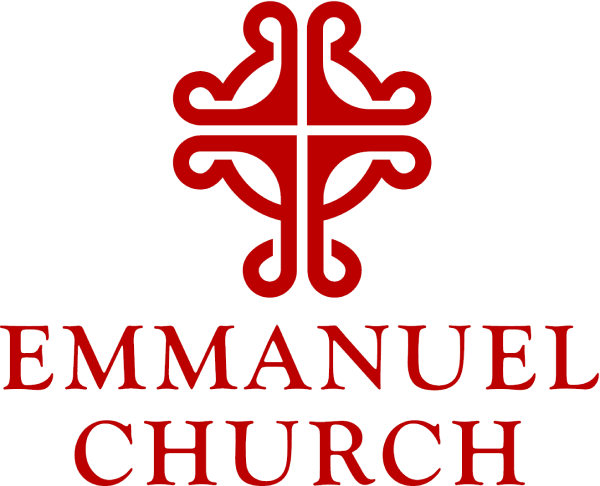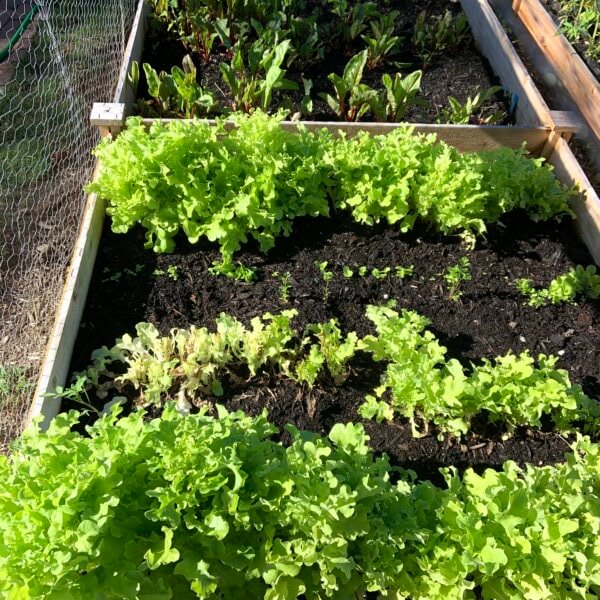
The Story of Seeds
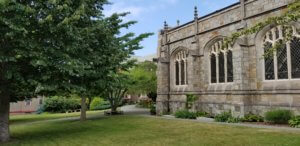 It has been a beautiful week at Emmanuel as we have started our process of reopening and reconnecting this week — seasonably hot, but with a big blue sky and a nice breeze — and absolutely lovely under the tree that shades the children’s sandbox. We’ve carried the nice big wooden chairs from around the table in the office out into that shady spot, and gathered in small groups of 3-4 at a time to reconnect with each other and share our stories and experiences of these months apart. After we spent some time together — telling stories and reconnecting — we spent a few minutes inside the church, reconnecting with our beloved worship space. I remember noticing how the nave held the light that glances in from the high clerestory windows. The salmon red carpet seems to attract sunbeams, bathing the whole church in the warm color. We can schedule some more small group meetings over the next few weeks if people have an interest in meeting together in the church yard and then spending a few minutes inside the church.
It has been a beautiful week at Emmanuel as we have started our process of reopening and reconnecting this week — seasonably hot, but with a big blue sky and a nice breeze — and absolutely lovely under the tree that shades the children’s sandbox. We’ve carried the nice big wooden chairs from around the table in the office out into that shady spot, and gathered in small groups of 3-4 at a time to reconnect with each other and share our stories and experiences of these months apart. After we spent some time together — telling stories and reconnecting — we spent a few minutes inside the church, reconnecting with our beloved worship space. I remember noticing how the nave held the light that glances in from the high clerestory windows. The salmon red carpet seems to attract sunbeams, bathing the whole church in the warm color. We can schedule some more small group meetings over the next few weeks if people have an interest in meeting together in the church yard and then spending a few minutes inside the church.
What’s your story of COVIDtime? How are our stories alike? What experiences or feelings have we had in our separation? How have those experiences or feelings changed us? How will we tell our new story together as Emmanuel Church? Our stories connect us — to each other, to our past, and to our future.
Gardening
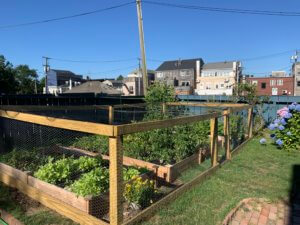 Here’s our story: Jere and I have spent these last months building, planting, and growing a garden. First we (well, Jere mostly) built the raised beds — four of them, 4×8 feet. Then we made about 10 trips to Home Depot in two separate cars, picking up bags of garden soil that we had ordered over the phone to be placed in the pickup station at the curb, so we wouldn’t have to go inside. Then, after we noticed the large family of rabbits that lives in our yard, we (well, Jere mostly) built a four-foot chicken wire fence with a gate around the perimeter of the beds, to protect our green things from the voracious and increasingly populous rabbits. Then we direct seeded the cold weather vegetables — lettuce, arugula, sugar snaps, and Swiss chard — that could be sown outdoors in March in Rhode Island’s Zone 6.
Here’s our story: Jere and I have spent these last months building, planting, and growing a garden. First we (well, Jere mostly) built the raised beds — four of them, 4×8 feet. Then we made about 10 trips to Home Depot in two separate cars, picking up bags of garden soil that we had ordered over the phone to be placed in the pickup station at the curb, so we wouldn’t have to go inside. Then, after we noticed the large family of rabbits that lives in our yard, we (well, Jere mostly) built a four-foot chicken wire fence with a gate around the perimeter of the beds, to protect our green things from the voracious and increasingly populous rabbits. Then we direct seeded the cold weather vegetables — lettuce, arugula, sugar snaps, and Swiss chard — that could be sown outdoors in March in Rhode Island’s Zone 6.

At the same time, we started a nursery in “terrariums” made out of clear plastic lettuce boxes from the grocery store — the kind mixed greens come in — for the things that needed to start inside. We planted parsley, thyme, mint, basil, green beans, zucchini, summer squash,
cucumbers, and SO MANY tomatoes in little peat seedling trays. We put the seedling trays inside the salad boxes and stacked them in the kitchen window, one on top of the other. I got this idea from our EDS kids, who were all sprouting seeds at home with their parents. The kids would hold up their sprouting seedlings to the camera every day to show their progress on our Zoom Morning Meeting.
Seedlings
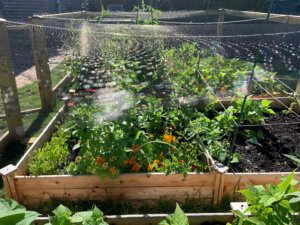 And so over COVIDtime, our seedlings grew, like the seeds in the Parable of the Sower from our reading from Matthew’s gospel this morning. We transplanted them into the garden in June, and then most of them burst forth in blossoms and bore fruit. The lettuce grew in loose green ruffles, the nasturtiums bloomed, and sugar snap peas appeared as fast as we could pick them. The seeds fell on good soil and brought forth fruit — and lettuce, tomatoes, and Swiss chard — some a hundredfold, some sixty, some thirty. Let anyone with ears listen! AND, the fence held! Score 1 for Mr. MacGregor. Don’t worry though. Peter Rabbit and all of his many brothers and sisters are getting plenty to eat from all the things growing OUTSIDE the fence.
And so over COVIDtime, our seedlings grew, like the seeds in the Parable of the Sower from our reading from Matthew’s gospel this morning. We transplanted them into the garden in June, and then most of them burst forth in blossoms and bore fruit. The lettuce grew in loose green ruffles, the nasturtiums bloomed, and sugar snap peas appeared as fast as we could pick them. The seeds fell on good soil and brought forth fruit — and lettuce, tomatoes, and Swiss chard — some a hundredfold, some sixty, some thirty. Let anyone with ears listen! AND, the fence held! Score 1 for Mr. MacGregor. Don’t worry though. Peter Rabbit and all of his many brothers and sisters are getting plenty to eat from all the things growing OUTSIDE the fence.
 And what do we hear when we listen to the Parable of the Sower? We know the Parable of the Sower: the sower sows seed extravagantly, casting it all over the place. Some of the seeds fall on the garden path, and the birds came and ate it up (the birds in our yard will eat seed right out of the good soil!). Other seeds fall on rocky ground, where they didn’t have much soil. They sprouted quickly, but when the sun rose, they got scorched; and since their roots hadn’t grown out, they withered away. Other seeds fell among thorns — maybe in an un-tended, unprepared area of the garden — and were choked out by weeds. We have a kind of weed in our garden that I’ve never seen before, with long, pointed leaves. Other seeds fell on good soil and brought forth fruit, some a hundredfold, some sixty, some thirty.
And what do we hear when we listen to the Parable of the Sower? We know the Parable of the Sower: the sower sows seed extravagantly, casting it all over the place. Some of the seeds fall on the garden path, and the birds came and ate it up (the birds in our yard will eat seed right out of the good soil!). Other seeds fall on rocky ground, where they didn’t have much soil. They sprouted quickly, but when the sun rose, they got scorched; and since their roots hadn’t grown out, they withered away. Other seeds fell among thorns — maybe in an un-tended, unprepared area of the garden — and were choked out by weeds. We have a kind of weed in our garden that I’ve never seen before, with long, pointed leaves. Other seeds fell on good soil and brought forth fruit, some a hundredfold, some sixty, some thirty.
What makes the seeds that fall on good soil thrive and bring forth fruit in such prodigious quantities — in one case a hundredfold, in another sixty, and in another thirty? When I listen, thinking about Jere’s and my garden — and the birds, the hard rocky ground of the yard before we added the raised beds filled with garden soil, and those weird weeds that want to take over my pepper garden. And I think it’s all about the roots.
Roots
 The seeds that fall on good soil grow deep roots, growing, stretching, winding their ways through the rich, dark earth, seeking water like we seek the nutrients of meaning and connection. Roots connect us to our place. We are rooted in our ground. We can re-root and plant ourselves and bloom in new places, but we don’t really take hold until we wind our roots into the nutrients of the soil and connect to the culture. Roots tap into deep meaning. As poet Gregory Orr points out, Life can’t be lived without meaning. Each of us has emotional and spiritual requirements that make us human. And our meaning — that spiritual food that feeds us — comes from our roots in our community — from our connections to God through each other. None of that meaning even exists without the context of the story of our
The seeds that fall on good soil grow deep roots, growing, stretching, winding their ways through the rich, dark earth, seeking water like we seek the nutrients of meaning and connection. Roots connect us to our place. We are rooted in our ground. We can re-root and plant ourselves and bloom in new places, but we don’t really take hold until we wind our roots into the nutrients of the soil and connect to the culture. Roots tap into deep meaning. As poet Gregory Orr points out, Life can’t be lived without meaning. Each of us has emotional and spiritual requirements that make us human. And our meaning — that spiritual food that feeds us — comes from our roots in our community — from our connections to God through each other. None of that meaning even exists without the context of the story of our
culture and our society. That’s the nutritious soil for our roots, that feeds us into thriving, so that we produce fruit — some a hundredfold, some sixty, and some thirty, as Matthew’s gospel says. And we seek meaning and connection through our rootedness in the good soil of our community.
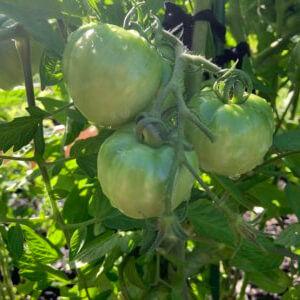 It’s through our relationships that our story is formed. We draw the meaning that we need to thrive and flourish from these necessary connections. What’s your story of COVIDtime? How are our stories alike? What experiences or feelings have we had in our separation? How have those experiences or feelings changed us? How will we tell our new story together as Emmanuel Church when we come back together in person? How will we tell our new story together, as our roots go deep, spread out, and intertwine, binding us together and to God? Amen
It’s through our relationships that our story is formed. We draw the meaning that we need to thrive and flourish from these necessary connections. What’s your story of COVIDtime? How are our stories alike? What experiences or feelings have we had in our separation? How have those experiences or feelings changed us? How will we tell our new story together as Emmanuel Church when we come back together in person? How will we tell our new story together, as our roots go deep, spread out, and intertwine, binding us together and to God? Amen
